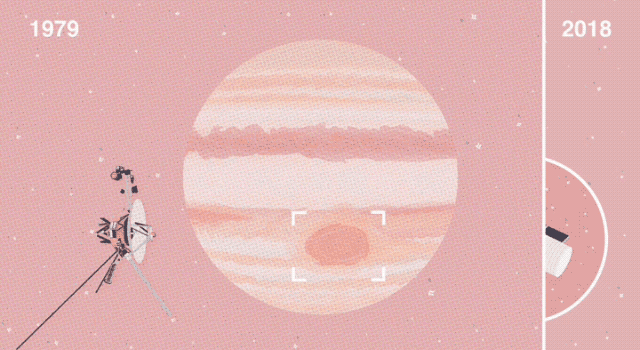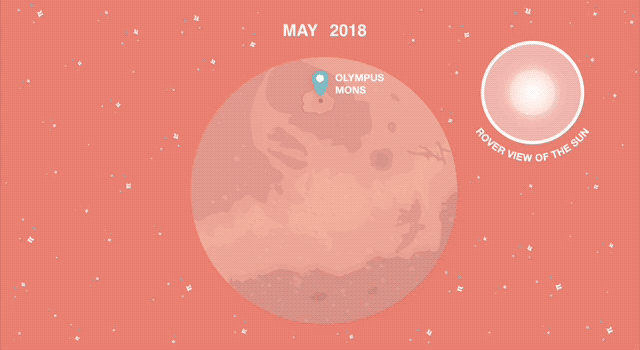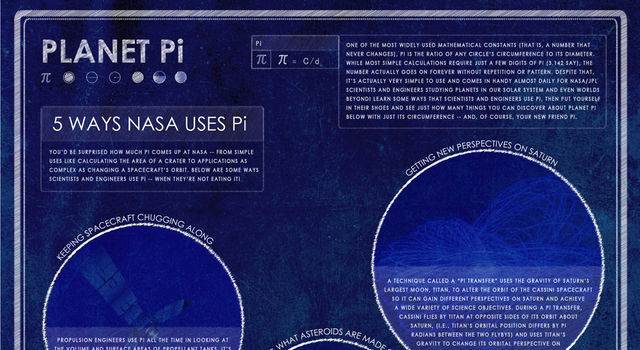Problem Set
Deadly Dust: A 'Pi in the Sky' Math Challenge
Overview
The "Pi in the Sky" math challenge gives students a chance to take part in recent discoveries and upcoming celestial events, all while using math and pi just like NASA scientists and engineers. In this problem from the set, students use the mathematical constant pi to calculate how much of Mars was covered during the giant 2018 dust storm.Materials
Background
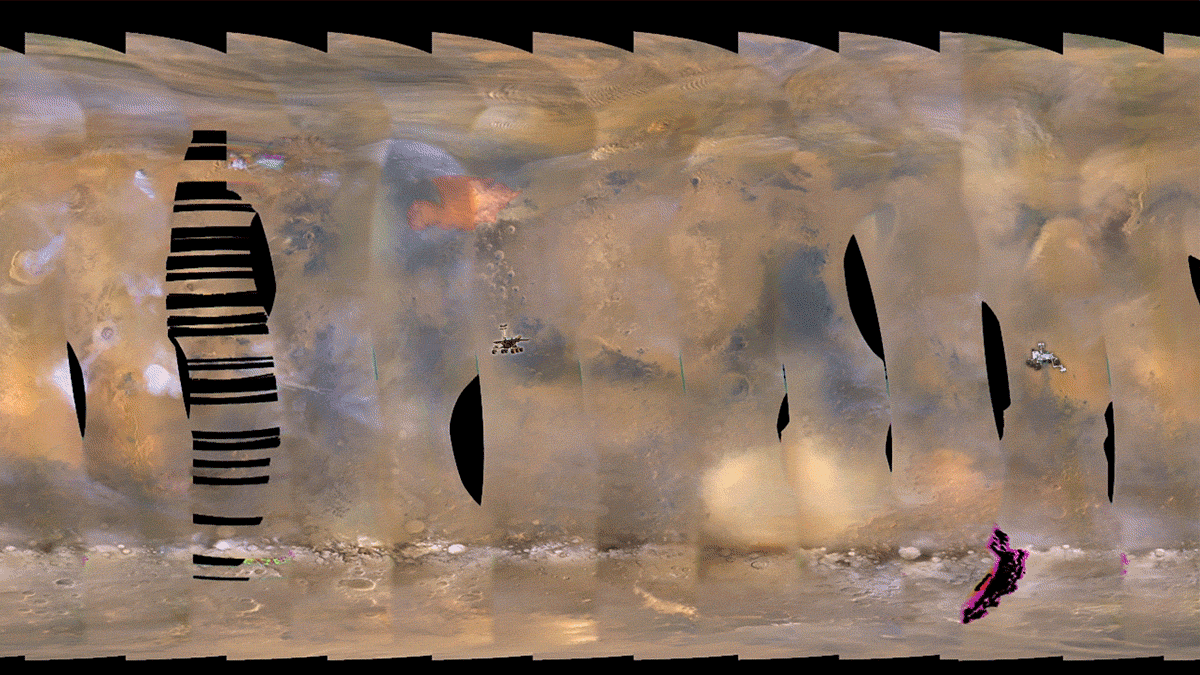
This set of images from NASA’s Mars Reconnaissance Orbiter (MRO) shows a giant dust storm building up on Mars in 2018, with rovers on the surface indicated as icons. Image credit: NASA/JPL-Caltech/MSSS | › Full image and caption
In late spring of 2018, a dust storm began on Mars and eventually covered nearly the entire planet in a cloud of dust. Darkness fell across Mars’ surface, blocking sunlight used by the solar-powered Opportunity rover to charge its batteries. At its height, the storm covered all but the peak of Olympus Mons, the largest known volcano in the solar system. In the Deadly Dust challenge, students must use pi to calculate what percentage of the Red Planet was covered by the dust storm.
Procedures
Deadly Dust
In the summer of 2018, a large dust storm enshrouded Mars, blocking visibility over a large portion of the planet. The thick dust covered almost all of the Mars surface, blocking the vital sunlight that NASA’s solar-powered Opportunity rover needed to survive. In fact, the storm was so intense and lasted for so long that Opportunity, which had spent 14.5 years traveling around the Red Planet, never managed to regain consciousness and the mission had to come to an end.
During the height of the storm, only the upper caldera of one of the solar system’s largest volcanos, Olympus Mons, peeked out above the dust cloud. The diameter of Olympus Mons’ caldera is approximately 70 km.
What percent of the Mars surface was covered in dust at that time?
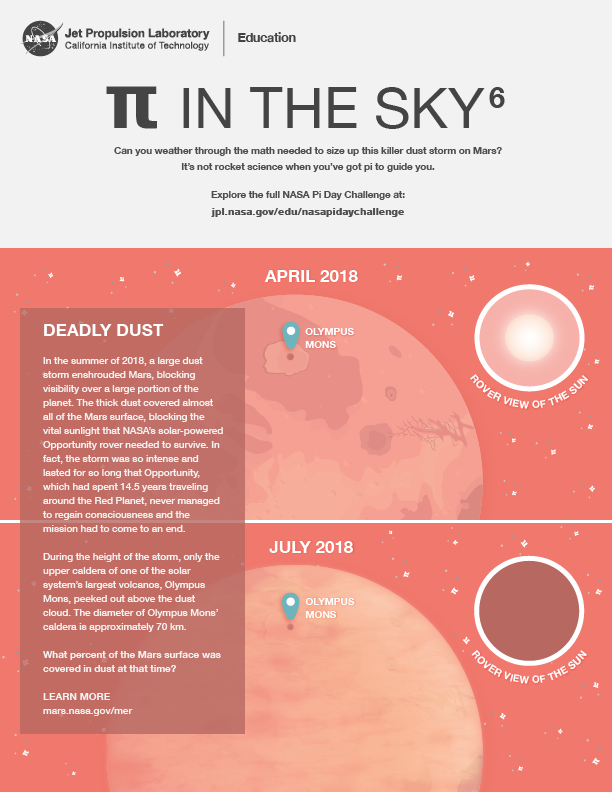
Image credit: NASA/JPL-Caltech/Kim Orr | › Download PDF
Assessment

Image credit: NASA/JPL-Caltech/Kim Orr | + Expand image
Extensions
Participate
-
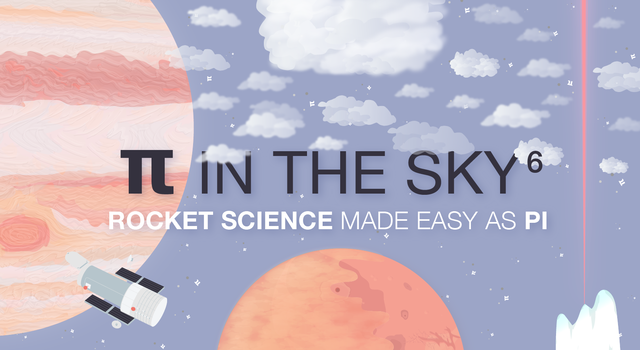
Pi Day Challenge Lessons
Here's everything you need to bring the NASA Pi Day Challenge into the classroom.
Grades 4-12
Time Varies
-

Slideshow: NASA Pi Day Challenge
The entire NASA Pi Day Challenge collection can be found in one, handy slideshow for students.
Grades 4-12
Time Varies
-
Pi Day: What’s Going ’Round
Tell us what you’re up to this Pi Day and share your stories and photos with NASA.
Join the conversation and share your Pi Day Challenge answers with @NASAJPL_Edu on social media using the hashtag #NASAPiDayChallenge
Blogs and Features
-
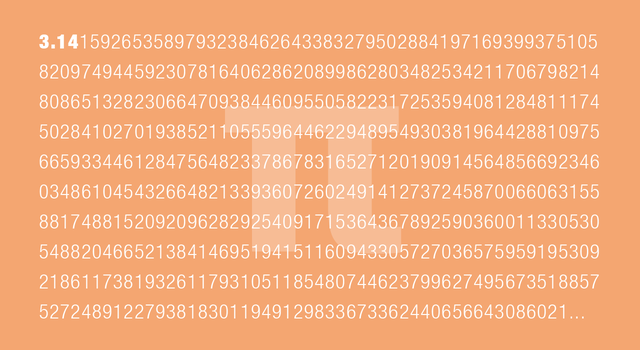
How Many Decimals of Pi Do We Really Need?
While you may have memorized more than 70,000 digits of pi, world record holders, a JPL engineer explains why you really only need a tiny fraction of that for most calculations.
-
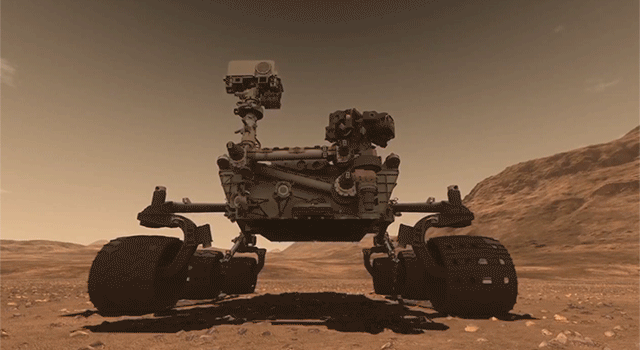
Slideshow: 18 Ways NASA Uses Pi
Whether it's sending spacecraft to other planets, driving rovers on Mars, finding out what planets are made of or how deep alien oceans are, pi takes us far at NASA. Find out how pi helps us explore space.





